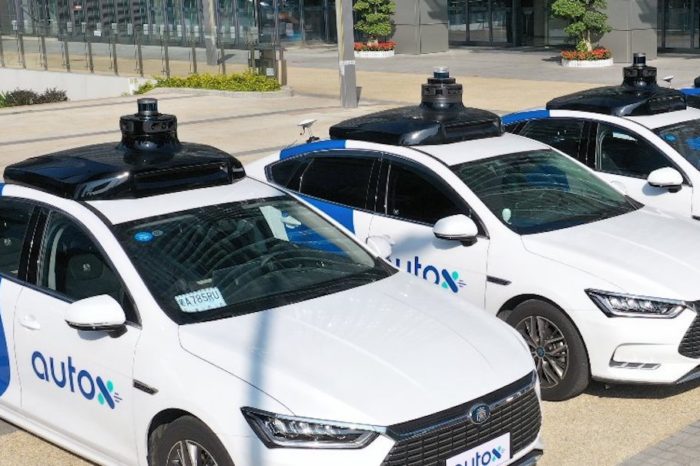Edge Computing Will Make Transportation More Efficient – but Safety and Security May Be the Biggest Winners

“Our IoT (Internet of Things) world is growing at a breathtaking pace, from 2 billion objects in 2006 to a projected 200 billion by 2020. That will be around 26 smart objects for every human being on Earth!”
–Intel
We are living in an age when smart, connected devices are touching every aspect of our lives. This revolution in connectedness is most apparent in the digital technologies consumers use every day, such as smartphones and computers. Yet, the vast majority of the world’s connected devices are invisible, serving as dutiful data-generating engines for everything from medical equipment, to industrial tools, to financial systems. The data blazes up to the cloud to be aggregated and analyzed. It’s generally very efficient under optimal network conditions.
But, what happens when connected devices are zipping along at 80 mph – and people’s lives depend on flawless data transfer? Such suboptimal conditions already prevail in the transportation realm, which is why a relatively new technology strategy is gaining traction: edge computing. This strategy places significant computing power – from processing, to storage, to analytics – as close as possible to the digital devices performing on the front lines. By operating at the periphery of the action, and not relying on constant connections with cloud servers, the edge components can reduce signal latency, enhance security, ease the strain on wireless bandwidth, and lower overall computing costs.
These four factors – latency, security, bandwidth and cost – will only become more critical as a new generation of connected and autonomous vehicles roll onto our highways. Today’s connected vehicles make do with existing cellular networks, 4G or 5G, but will find it ever-harder to compete for bandwidth against data-greedy consumer applications. Even the best-engineered autonomous or connected vehicle will not be immune to computer malfunctions or sporadic breaks from cellular networks. Edge computing devices will be ready to fill those gaps, much as today’s GPS unit will continue to provide directions despite losing satellite contact due to storms or tunnels. The key difference: lives will be at stake.
Milliseconds separating life from death
Here are two examples of how edge computing could make a major difference in common transportation safety scenarios. In some parts of the country, new higher-speed passenger train systems have been built, which are reducing travel time for commuters while easing congestion on highways. But one problem is that people along the tracks or drivers waiting at crossings may underestimate the train’s velocity and impatiently cross the tracks, with tragic consequences.
Transportation engineers could reduce this risk by employing edge computers on the train, at crossings and even along the rails at strategic points. Devices at train crossings could collect and analyze data from the approaching train and nearby cars, and could use cloud data – and perhaps even current weather and traffic conditions – to analyze the likelihood that a car will jump across. That analysis could be sent to the train’s computer and human driver as an alert. As an additional safety measure, an edge computing device could gather and analyze data from sensors along the tracks, calculating and transmitting alerts about potential pedestrian crossings, particularly along curves that impede the train driver’s line of site.
In a similar way, edge computers could be deployed at road intersections to reduce the risk of deadly collisions. These computers could analyze data collected about nearby pedestrians, bicyclists and vehicles – as well as from sensors near the intersection – to predict behaviors and deploy alerts that could prevent a tragedy.
Protecting privacy while stopping crime
Recently, I had the privilege of speaking with Mahadev Satyanarayanan (Satya) of Carnegie Mellon University, a technology visionary who many consider to be the father of edge computing. Among the topics we discussed was the role edge computing could play in “threading the needle” between pursuing human traffickers and preserving Americans’ right to privacy.
Every year in the U.S, between 14,500 and 17,500 people are trafficked, according to the American Bar Association. We can assume that many thousands of victims are moved by their captors in cars and trucks across our roads and highways. These vehicles are likely to stop briefly at rest areas, which could give police a chance to disrupt the trafficker’s plans. The issue is that our privacy laws protect the general public from being indiscriminately video recorded by government authorities, so only real-time viewing of criminals in action would normally be possible.
With edge computers, however, new possibilities emerge. These computers could synthesize data collected by thermal sensors (that detect humans inside of cargo vans and trucks) as well as video cameras, and use artificial intelligence to determine if trafficking activity is likely. If the likelihood is high, the edge computer could “denature” the video by redacting the faces of the suspects, but sharing their actions and, potentially, license plate numbers, with police. This way, no one’s rights are infringed, but a victim’s chance of rescue is increased significantly. Under certain circumstances, redacted identification information could be stored in encrypted form, to be made available only if a search warrant or other legal edict is issued. This approach would allow for the pursuit of justice while still safeguarding privacy.
Edging forward
Pioneers like Satya are inspiring me and other members of HNTB’s Emerging Mobility Solutions group to look ahead to the next generation of technologies that will make transportation solutions smarter, safer and more efficient. Collaboration will be key to success, which is why HNTB is now forming a Data Consortium for Emerging Mobility Solutions to help develop standardized approaches for data management, privacy, security and analytics in transportation applications. This consortium, which will comprise select transportation agencies, innovation partners and academic institutions, will aim to give all transportation agencies better tools to optimize planning and operational performance.
We all know there are many technology challenges yet to be conquered, but it is exhilarating to be working together at transportation’s leading edge to improve people’s lives and to keep them safe.
By Beth Kigel, Vice President at HNTB

Beth Kigel serves as vice president, Intelligent Transportation and Emerging Mobility Solutions for HNTB Corp. She is a global thought-leader in new mobility and smart city ecosystems and helps transportation agencies, cities and regions develop smart, connected infrastructure solutions.






